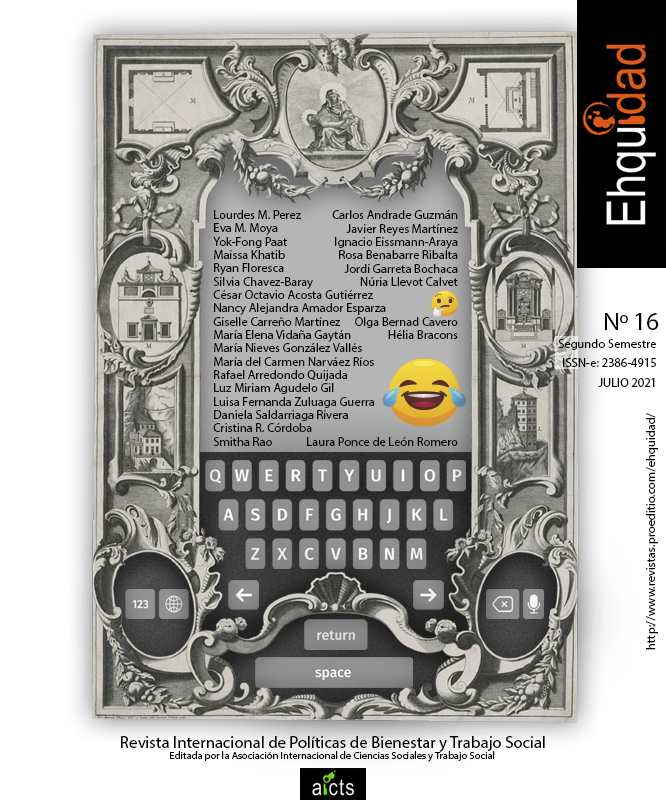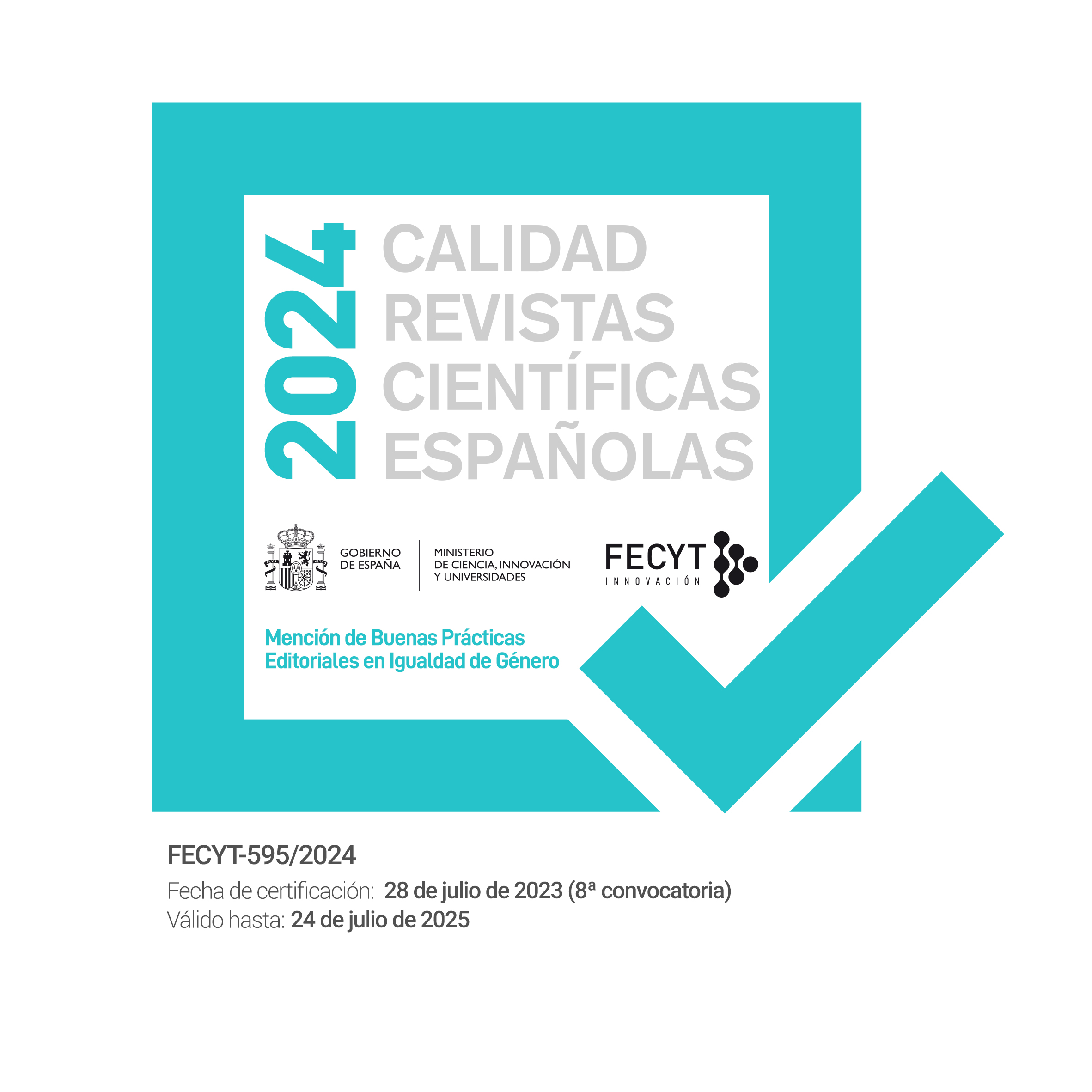Interpersonal and structural complexities among women experiencing homelessness in a U.S.-Mexico border community
DOI:
https://doi.org/10.15257/ehquidad.2021.0012Keywords:
women, homelessness, structural complexities, health, gender violenceAbstract
The life complexities of women experiencing homelessness warrants further exploration as there is insufficient information on their life’s interpersonal and structural challenges. The aim of this study is multifold: to explore the experiences of unhoused women in El Paso, Texas, a city that borders with Ciudad Juarez Mexico, to identify barriers to health and social services, to promote agency, and improve access to care. Recruitment of participants was done through partner agencies in selecting a sample of 15 Hispanic and 15 Non-Hispanic women who were experiencing homelessness and residing in local shelters in the spring of 2019. The Beck Depression Inventory II, General Self-Efficacy (GSE), and Adverse Childhood Experiences (ACE) scales were administered to enhance understanding and knowledge on the characteristics of women with a lived experience of homelessness to learn about their interpersonal and adverse experiences and future outlook. Feminist perspective was employed as part of the theoretical framework to further explore the interpersonal and structural realities of women experiencing homelessness. Three major themes emerged: relational adversity and intimate partner violence; lack of social support; and challenges related to transitioning out of homelessness. Implications highlighted in the findings will inform health and human service providers, and decision makers about the needs of women and the importance of person-centered carer for this population. It is critical that social workers, human service practitioners, policy makers, researchers, and the general public pause, listen and understand the realities that women experiencing homelessness face and their resiliency to ensure quality services to support them transition and end homelessness.
Downloads
References
Beck, A.T., Steer, R.A., & Brown, G.K. (1996). Manual for the Beck Depression Inventory-II. San Antonio, TX: Psychological Corporation.
Biederman, D. J., & Forlan, N. (2016). Desired destinations of homeless women: Realizing aspirations within the context of homelessness. Creative Nursing, 22(3), 196–203
Campbell, H., & Lachica, J. G. (2013). Transnational homelessness?: Finding a place on the US – Mexico Border Transnational Homelessness. Journal of Borderlands Studies, 28(3), 279–290. https://doi.org/10.1080/08865655.2013.863441
Castaneda, E., Klassen, J. D., & Smith, C. (2014). Hispanic and Non-Hispanic homelessness populations in El Paso, Texas. Hispanic Journal of Behavioral Sciences, 10.1177/07399863114552993
City of El Paso. (2018). Demographic profile. Economic and International Development. Retrieved from https://www.elpasotexas.gov/economic-development/business-services/data-and-statistics/population
Crenshaw K. (1993). Demarginalizing the intersection of race and sex: a Black feminist critique of antidiscrimination doctrine, feminist theory and antiracist politics. In Feminist Legal Theory (ed D.K Weisberg.), pp. 383– 395. Temple University Press, Philadelphia.
Denzin, N.K. (1978). Sociological methods: A sourcebook. New York, NY: McGraw-Hill.
Domestic Abuse Intervention Programs (DAIP). (2017, March 17). Wheels. Retrieved from https://www.theduluthmodel.org/wheels/
Felitti, V. J., Anda, R. F., Nordenberg, D., Williamson, D. F., Spitz, A. M., Edwards, V., Koss, M. P., Marks, J. S. (1998). Relationship of Childhood Abuse and Household Dysfunction to Many of the Leading Causes of Death in Adults. The Adverse Childhood Experiences (ACE) Study. American Journal of Preventive Medicine 14(4).
Hendwood, B.F., Wenzel, S., Mangano, P. F., Hombs, M., Padgett, D., Byrne, T., …Uresky, M. (2015). The grand challenge of ending homelessness (Grand Challenges for Social Work Initiative Working Paper No. 9). Cleveland, OH: American Academy of Social Work and Social Welfare.
HUD. (2019). CoC homeless populations and subpopulations report-All states. Territories, Puerto Rico, and DC. US Department of Housing and Urban Development. Retrieved from https://www.hudexchange.info/programs/coc/coc-homeless-populations-and-subpopulations-reports/
Huey, L., Broll, R., Hryniewicz, D., & Fthenos, G. (2014). “They just asked me why I became homeless”: “Failure to ask” as a barrier to homeless women’s ability to access services post-victimization. Violence and Victims, 29(6), 952–966.
IBM Corp. Released 2017. IBM SPSS Statistics for Windows, Version 25.0. Armonk, NY: IBM Corp.
Jones, M. M. (2016). Does race matter in addressing homelessness? A review of the literature. World Med Health Policy 8(2). 139–156. doi:10.1002/wmh3.189.
Kohlbacher, F. (2006). The use of qualitative content analysis in case study research. Forum: Qualitative Social Research. 7(21).
Mayock, P., Sheridan, S., & Parker, S. (2012). Migrant women and homelessness: The role of gender-based violence. European Journal of Homelessness, 6(1).
Miles, M. B., Huberman, M. A., & Saldaña, J. (2014). Qualitative data analysis: A Methods Sourcebook. 3rd Ed. SAGE.
Moya, E. M., Chavez-Baray, S. M., Loweree, J., Mattera, B., & Martinez, N. (2017). Adults experiencing homelessness in the US–Mexico Border region: A photovoice project. Frontiers in Public Health, 5:113. doi: 10.3389/fpubh.2017.00113
Murphy, A., Dube, S., Steele M., & Steele, H. (2007) Clinical ACE and child clinical ACE questionnaires (Unpublished Manuscript).
Noble, H., & Heale, R. (2019). Triangulation in research, with examples. Evidence-Based Nursing, 22(3). doi: 10.1136/ebnurs-2019-103145
Nooe, R. M. & Patterson D. A. (2010). The ecology of homelessness. Journal of Human Behavior in the Social Environment, http://dx.doi.org/10.1080/109111350903269757
Paat, Y.-F., Morales, J., Tullius, R., Moya, E. M., & Alcantara, R. (2019). A life course approach to understanding homelessness of shelter residents. Journal of Social Distress and the Homeless, 28(2), 176–185. doi: 10.1080/10530789.2019.1640410
Phipps, M., Dalton, L., Maxwell, H., & Cleary, M. (2019). Women and homelessness, a complex multidimensional issue: findings from a scoping review. Journal of Social Distress and the Homeless, 28(1), 1–13. doi: 10.1080/10530789.2018.1534427
Rabiah-Mohammed, F., Oudshoorn, A., & Forchuk, C. (2019). Gender and experiences of family homelessness. Journal of Social Distress and the Homeless, 1–10. doi: 10.1080/10530789.2019.1679420
Schwarzer, R. (1993). Measurement of perceived self-efficacy. Psychometric scales for cross-cultural research. Berlin, Germany: Freie Universität Berlin
Schwarzer, R., & Jerusalem, M. (1995). Generalized Self-Efficacy scale. In J. Weinman, S. Wright, & M. Johnston, Measures in health psychology: A user’s portfolio. Causal and control beliefs (pp. 35-37). Windsor, England: NFER-NELSON.
Saldana, J. (2015) The coding manual for qualitative researchers. SAGE Publications. Third Edition.
Sesar, K., Simic, N., & Barisic, M. (2010). Multi-type childhood abuse, strategies of coping, and psychological adaptations in young adults. Croatian medical journal, 51(5), 406–416. https://doi.org/10.3325/cmj.2010.51.406
Teruya, C., Longshore, D., Andersen, R. M., Mpp, A., Anp, A. N., Leake, B., Gelberg, L. (2010). Health and health care disparities among homeless women health. Women & Health. https://doi.org/10.1080/03630242.2010.532754
The El Paso Coalition for the Homeless. (2019) Resources. Retrieved from http://www.epchomeless.org/resources/
Thorne S. (1998). Ethical and representational issues in qualitative secondary analysis. Qualitative
Health Research, 8, 547– 555.
Tsai, J., Mares, A. S., & Rosenheck, R. A. (2012). Does housing chronically homeless adults lead to social integration? Psychiatric Services, 63(5), 427–434. doi:10.1176/appi.ps. 201100047
UN Women. (2020) Retrieved from https://www.unwomen.org/en
Upshur, C. C., Jenkins, D., Weinreb, L., Gelberg, L., & Orvek, E. A. (2017). Prevalence and predictors of substance use disorders among homeless women seeking primary care: An 11 site survey. The American Journal on Addictions, 26(7), 680–688. doi:10.1111/ajad.12582
Whitbeck, L. B., Armenta, B. E., & Welch-Lazoritz, M. L. (2015). Borderline personality disorder and axis I psychiatric and substance use disorders among women experiencing homelessness in three US cities. Social Psychiatry and Psychiatric Epidemiology, 50(8), 1285–1291.
Wuest J. (1995). Feminist grounded theory: an exploration of the congruency and tensions between two traditions in knowledge discovery. Qualitative Health Research, 5,125– 137.












